As a small business owner, you must fill out a certificate of origin form whenever you make an international trade. This form contains information about your business, product, and country of origin. Completing the requirements in this document will allow your products to move freely on the market with no issues. This article will discuss how to get a certificate of origin and the benefits it can bring to your business.
Table of Contents
What Is a Certificate of Origin?

A certificate of origin is a document used to attest that the goods being exported were made in the exporting country or were manufactured using raw materials imported from another country.
Foreign buyers commonly request a certificate of origin as evidence that their goods will be able to clear customs without being subject to duties or taxes.
An authorized certifying authority, usually a government agency, issued the certificate. The authority then verifies the information provided by the exporter before issuing a C.O.
Certificate of Origin Templates
Certificate of Origin Templates are official documents used to certify the country of origin of a particular product or goods. These templates provide a standardized format for creating and issuing certificates that confirm the place where a product was manufactured, produced, or grown. Certificate of Origin Templates are essential for international trade and serve as evidence of the origin of goods, facilitating customs clearance and compliance with trade regulations.
Certificate of Origin Templates are crucial for international trade, as they provide proof of the origin of goods, which is often required by customs authorities, importers, and other parties involved in cross-border transactions. These certificates help determine the eligibility for preferential trade agreements, assess import duties and taxes, and ensure compliance with trade regulations and documentation requirements. Whether used by exporters, manufacturers, or trade associations, Certificate of Origin Templates provide a standardized and reliable format for certifying the origin of goods, facilitating international trade and maintaining transparency and trust in global commerce.
When do you need a certificate of origin?
There are several reasons you might need a C.O. For example:
- You want to sell your products in another country but will only accept them with proof that they were made there.
- You want to import raw materials from another country and pay customs duty only once (known as “duty drawback”).
- You’re importing or exporting goods between countries within the European Union (E.U.), who have agreed on trade arrangements, and need proof that your product qualifies for these arrangements (see below).
Certificate of Origin USA
A Certificate of Origin (C.O.) is a document that certifies the origin of goods. A government agency usually issues it. The CO is used as a supporting document when filing for import/export duty refunds and anti-dumping/countervailing duties.
U.S. Customs & Border Protection (CBP) does not require a C.O. for products imported into the United States unless the product is subject to one of the following:
- Anti-dumping and countervailing duties
- Importing merchandise from Cuba
- Importing items made with prison labor or forced labor
- Importing textiles, apparel, or footwear manufactured in Burma (Myanmar)
- Other countries may require C.O.s for some types of imports, such as textiles and apparel.
You must know the type of certificate you need, as different documents are used for various purposes. It is also important to know that each country has its own requirements for certifying your products.
You can use a certificate of origin USA if:
The product was manufactured in the USA.
It was manufactured in the USA but not made from U.S. raw materials. In this case, you need a Certificate of Origin USA to prove that your product was manufactured in this country. You will also need this kind of document if your product contains materials that were imported into the United States but not produced there (for example, an imported part or piece of equipment).
You are selling goods commercially and want to sell them in another country (for example, Canada).
Types of a Certificate of Origin
There are several types of certificates of origin, each with its own purpose:
Non-preferential Certificate of Origin
A non-preferential certificate is used when your company sells products in the United States and other countries worldwide. It indicates that the items were produced entirely within one country — not just assembled there — and that they do not contain parts from another country. In order to issue this document, U.S. Customs requires documentation showing all stages of production — materials purchased from outside sources and domestically—and proof that all workers involved received fair wages and working conditions (for example, union membership).
Preferential
This type of certificate identifies products that qualify for special treatment under trade agreements between countries. The most common preferential certificates are issued under NAFTA (North American Free Trade Agreement) and ASEAN (Association of Southeast Asian Nations). They’re used in international trade between North America and Asia-Pacific countries because they eliminate or reduce tariffs on certain goods shipped from one country to another under these agreements.
The importance of a Certificate of Origin
The main reason why this is important for the importer to get the certificate of origin is that it will help them get better deals from their suppliers.
The certificate of origin is needed because it shows that the product has been made in a particular country, not another one. This means that if you want to purchase products from a specific country, you can use this certificate as proof to show them where they should be coming from. This can help you get a better product deal and save money on taxes and tariffs.
If you are an importer who wants to ensure they are getting the best deals possible on their products, then having a certificate of origin can be very helpful. It will allow you to know exactly what type of product you are purchasing and where it came from.
How do I get a certificate of origin?
You need to be a registered importer to get a certificate of origin. If you still need to register, you can apply online by registering as an importer on the Trade Statistics Bureau website.
Once your application has been approved, you will receive an email notification with your login credentials. You can then log in to the CSO system and request an electronic certificate of origin (eCO).
If you are using our paper Ecos, please note that there is no longer any need for additional supporting documents such as purchase invoices or other supporting documents when requesting Ecos under the GSP scheme. However, if you require a hard copy certificate or your goods are ineligible under GSP, they will ask for additional supporting documents at this stage.
Can I create my Certificate of Origin?
You can create your own Certificate of Origin.
If you decide to create your own C.O., ensure that it meets the requirements of a normal C.O. and not a Customs Declaration.
To be accepted by customs, the document must include the following:
- The name and address of the exporter
- The name and address of the importer (if different from above)
- The country in which the goods were produced
- A description of the products being exported (including quantity and value)
- An indication that the goods have been produced entirely in one country (this is important for determining whether or not an export tariff is applicable)
Conclusion
In conclusion, the certificate of origin plays an important role in the export and import of goods. But it is also essential to safely import goods for human consumption. So if you are going to export or import goods, first look at the information above related to certificates of origin; you will be able to understand how to apply, prepare, and more.
FAQs
Can I create my own certificate of origin?
Typically no, certificates of origin need to follow special formats including details like the exporter, consignee, transport details and be certified with an authorizing signature and stamp to be considered valid. Self-created templates are usually not accepted.
How do I write a certificate of origin?
Most chambers of commerce provide template certificates of origin for members to fill requested shipment details. Writing tips: Use black ink, print information clearly, list goods origins accurately, add stamps/seals, provide issuer details and legally binding authorized signatures.
What is the simplified certificate of origin?
A simplified certificate of origin is a blanket CoO form exporters can complete once to cover multiple shipments of identical goods to the same country over a 12 month period. This saves resubmitting detailed forms for each repeated shipment.
Do certificates of origin need to be notarized?
A certificate of origin does not require notarization by a public notary. However it must receive certification from an issuing body like a local chamber of commerce. Their signature, stamp/seal legitimizes the declared goods origin.
What is a valid certificate of origin?
A valid CoO has accurate product descriptions, correct country/location of manufacture details, is issued by an authorized body like a chamber of commerce, displays official stamps/seals, follows proper format guidelines, and is both signed and dated by the certifying officer.
Does a certificate of origin need to be certified?
Yes, a certificate of origin requires certification from an issuing party like the chamber of commerce to validate the goods origin details. Uncertified certificates lacking stamps, seals and signatures will not be accepted by customs authorities.

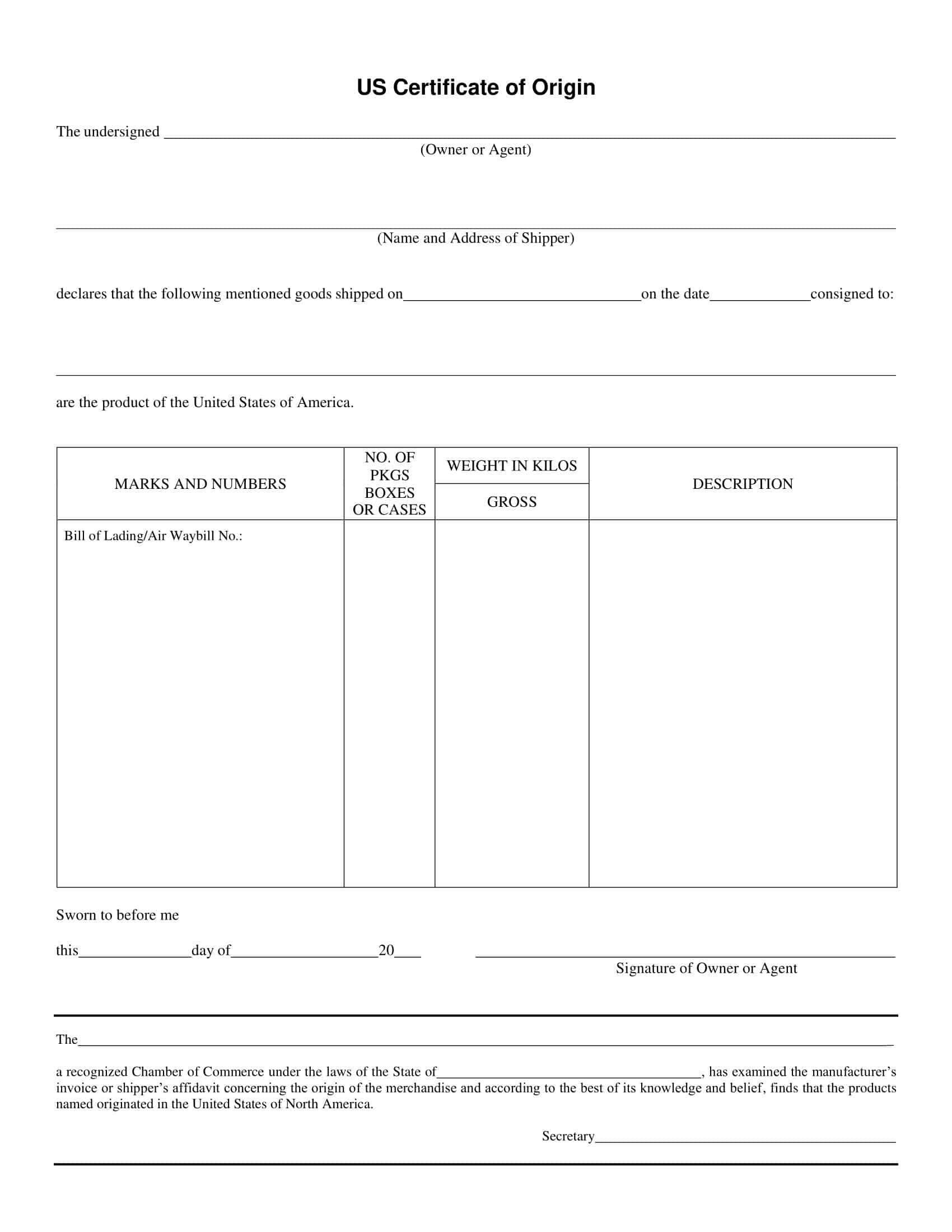





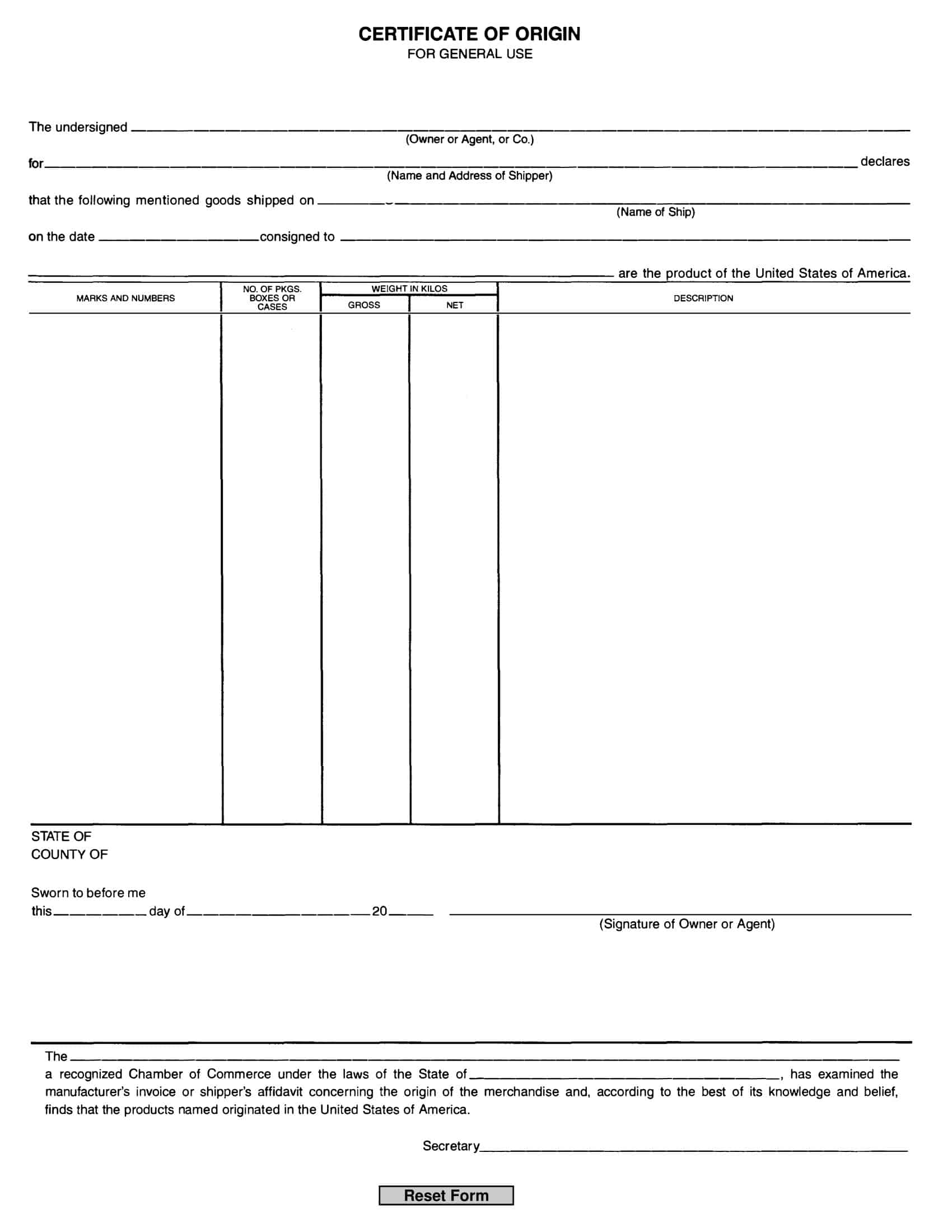








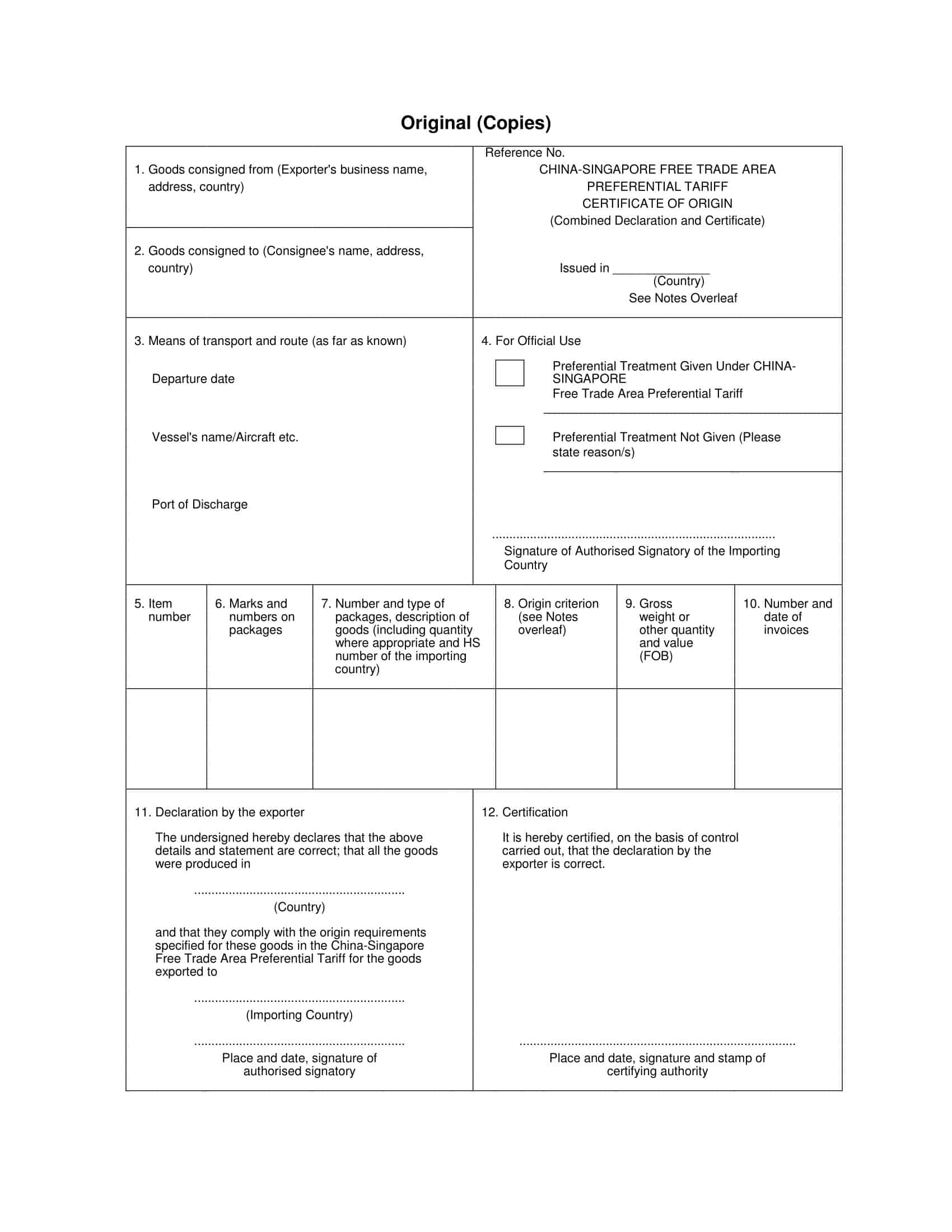


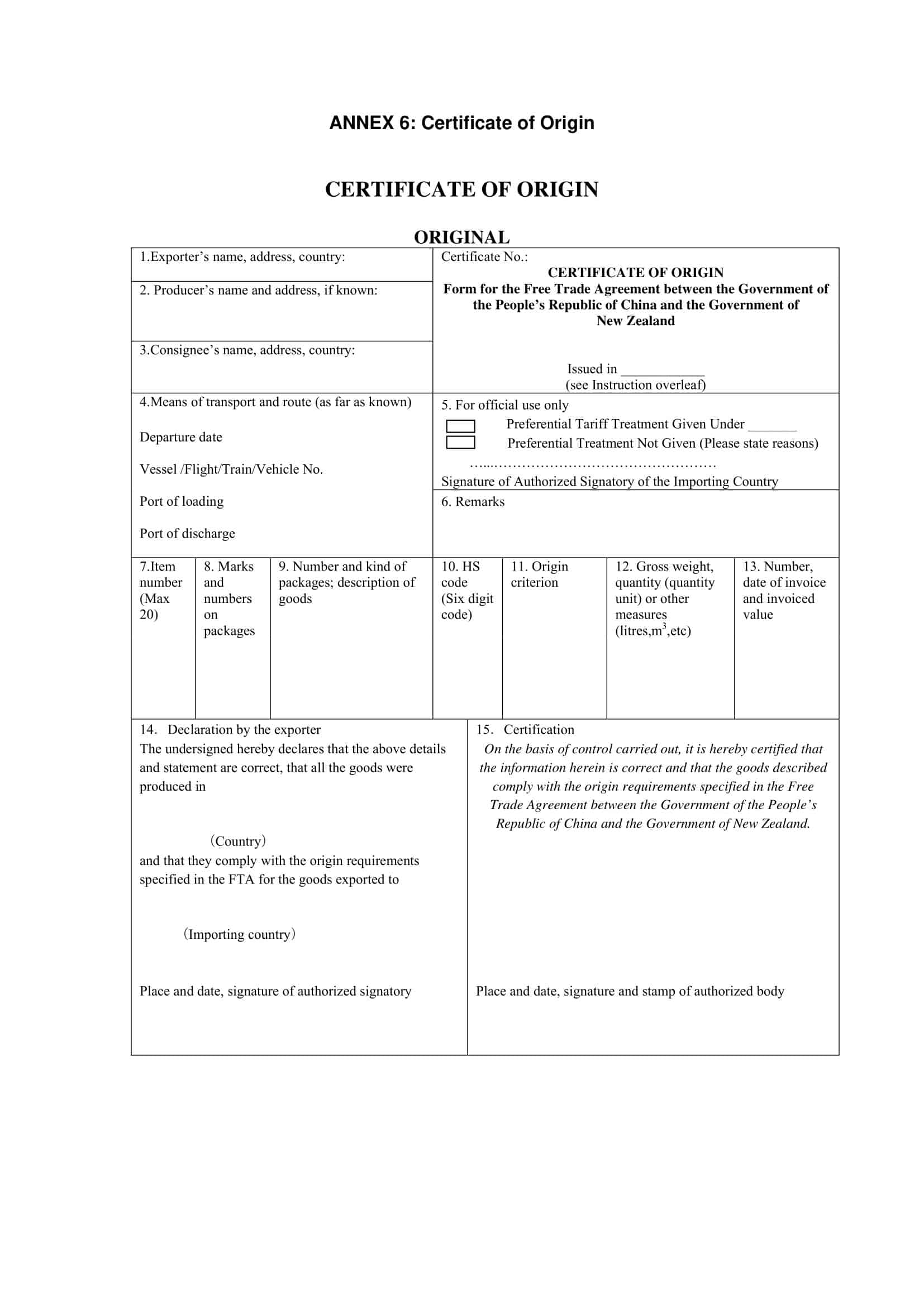
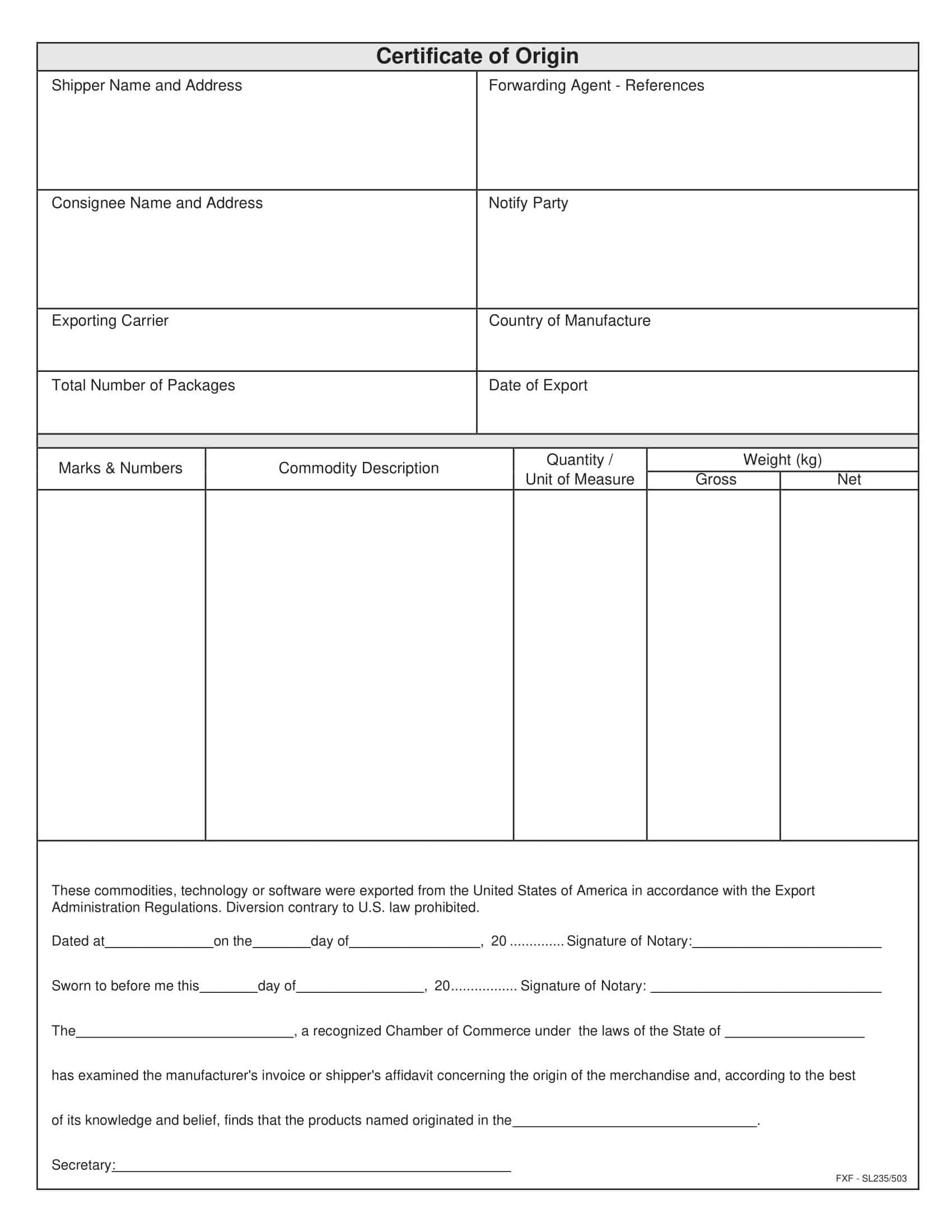
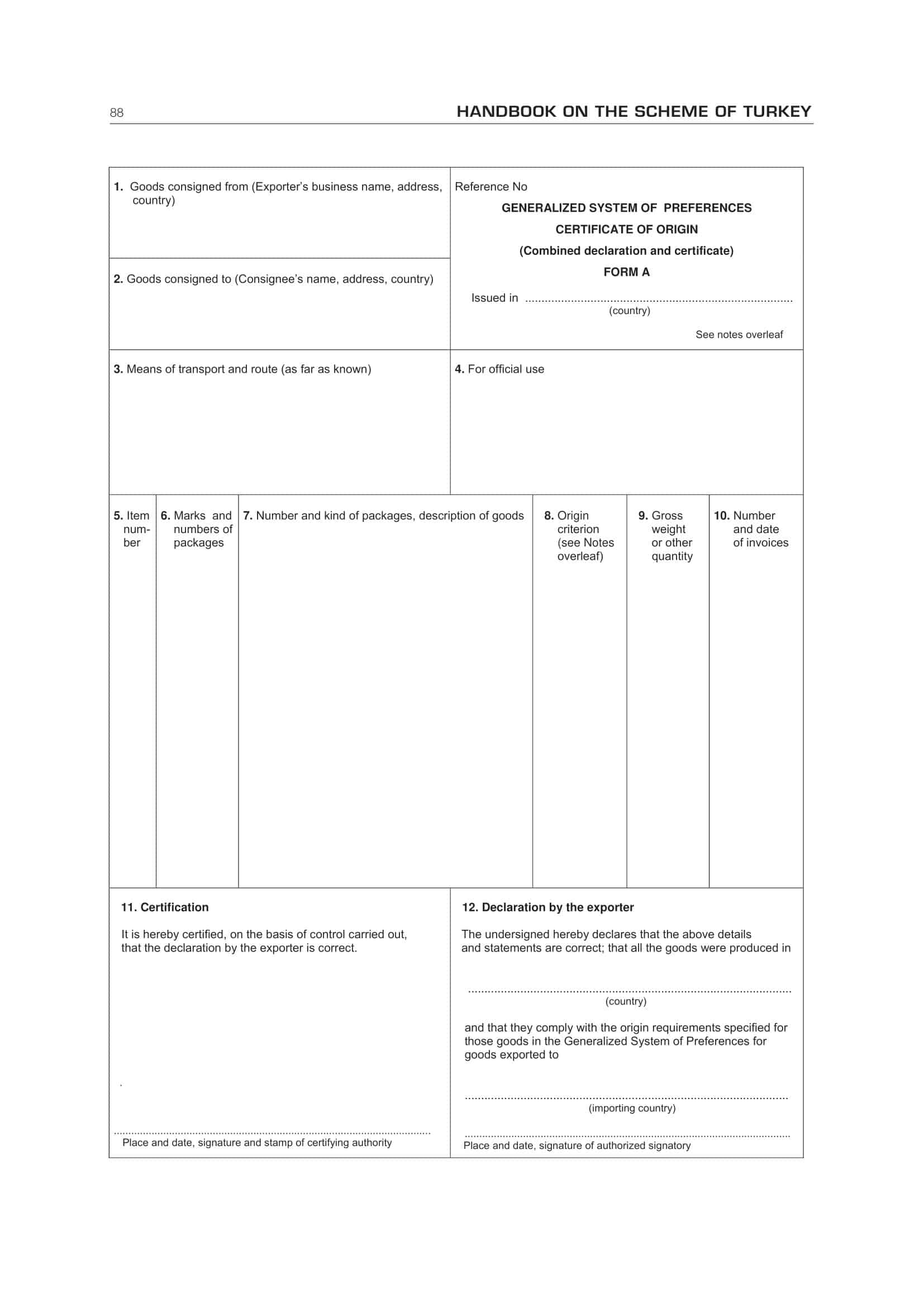








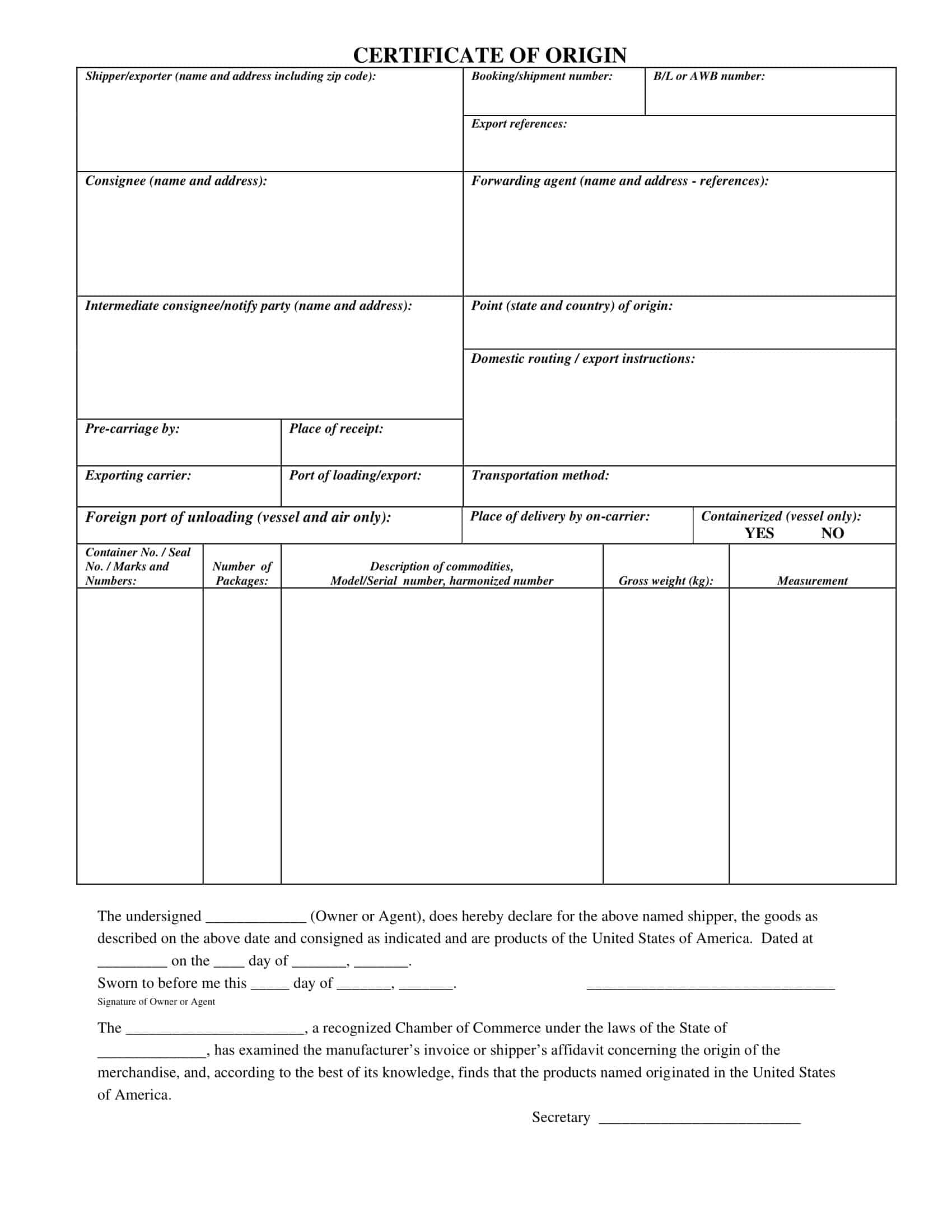












![Free Printable Estoppel Certificate Templates [PDF, Word] Tenant 1 Estoppel Certificate](https://www.typecalendar.com/wp-content/uploads/2023/05/Estoppel-Certificate-1-150x150.jpg)
![Free Printable Roommate Agreement Templates [Word, PDF] 2 Roommate Agreement](https://www.typecalendar.com/wp-content/uploads/2023/06/Roommate-Agreement-150x150.jpg)
![Free Printable Credit Card Authorization Form Templates [PDF, Word, Excel] 3 Credit Card Authorization Form](https://www.typecalendar.com/wp-content/uploads/2023/06/Credit-Card-Authorization-Form-150x150.jpg)
